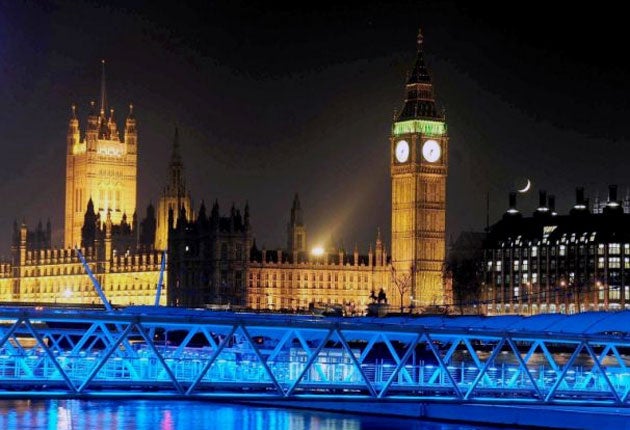Official: the Houses of Parliament really are full of vermin
Records obtained by <i>The Independent</i> reveal scale of infestation

For some the news that the Houses of Parliament, Downing Street and other parts of Whitehall are infested with self-serving, rapacious vermin might not be entirely surprising. But rather than being overrun by humans of questionable repute, the centre of British government is under siege by pests from the animal world.
Records obtained by The Independent under the Freedom of Information Act show that £60,000 was spent last year on eradicating unwanted visitors from Westminster, including foxes from the gardens of No 10 and the adjoining Cabinet Office and the "hygienic removal" of two dead pigeons from the Department for Children, Schools and Families (DCSF).
Most of the pest annihilation budget is consumed by the Houses of Parliament, where £54,323 was spent in the last financial year keeping a variety of irksome fauna in check, including the use of a falconer to prevent pigeons and seagulls from disturbing the work of the Honourable Members and their Lordships.
Documents supplied by the Parliamentary Estate reveal that hiring a bird of prey and a human handler at an annual cost of £12,678 does not entirely end the problems caused by birds roosting on the Palace of Westminster. A further £1,235 was spent on removing pigeon droppings and other detritus from the stonework of Charles Barry's neo-gothic masterpiece.
If there was any doubt about the seriousness with which the managers of Parliament take their pest control responsibilities, it is resolved by the fact that they plot a monthly graph of mouse sightings in the buildings, including within the House of Commons and the House of Lords.
The graph shows that between January last year and February this year a total of 195 rodent sightings were reported, of which 22 were found in the Commons. Only the mischievous would suggest that their Lordships were much less prone to vermin than MPs – a total of 10 mice were spotted among the peers of the realm.
In a statement, the parliamentary managers said: "The estate encounters some pigeon and gull activity which is controlled by the services of a falconer and also suffers occasional fruit fly activity, but these incidences are not recorded separately. Specific data is only recorded for mouse sightings as these account for the vast majority of pest issues."
Records show the Department of Health, which is responsible for drawing up policy to deal with public health issues presented by pests, spent £2,383 last year on dealing with "sightings of mice, reports of fruit flies and an incident of carpet fleas".
The Italianate splendour of George Gilbert Scott's Foreign Office building on Whitehall, completed in 1868, has also been the subject of a number of unauthorised invasions. Pest control contractors paid a total of 109 visits to the King Charles Street building last year to deal with 38 infestations, including "one instance related to pigeons, one instance involving dead rats, 31 for mice and five for flies".
In keeping with its educational mandate, the DCSF paid £100 for "preventative insect infestation advice" after a problem with biting insects.
Perhaps the most interesting variety of pest to be confronted within Whitehall is to be found at the Cabinet Office, which includes 10 Downing Street. The department refused to disclose its spending on vermin control, saying it was part of a general facilities management contract.
But it had to deal with "rabbits and foxes in the ground", presumed to be the gardens outside No 10 and adjoining buildings. In a statement, the Cabinet Offices said: "The nature of infestations covered by the contract includes a wide range of avian pests, mice, rats in the ground, subterranean areas and void spaces, rabbits, foxes in the ground. We do not have any details of the quantity of pests."
The fate of foxes who sought shelter in Gordon Brown's backyard goes unrecorded. But pest control experts said the nation's legislators and civil servants were not alone in sharing their offices with the animal world.
Kevin Higgins, deputy chief executive of the British Pest Control Association, said: "These are problems you will get today in almost any office in the UK. Rats will go anywhere they think they will find food and fruit flies can congregate around any spill of drink or food that is discarded in a difficult-to-reach place.
"The only answer is scrupulous hygiene and the proofing of buildings. You need to seal up airbricks with mesh to stop rodents getting in. The age of the building doesn't really matter much – it's more a matter of how well it is maintained."
Subscribe to Independent Premium to bookmark this article
Want to bookmark your favourite articles and stories to read or reference later? Start your Independent Premium subscription today.

Join our commenting forum
Join thought-provoking conversations, follow other Independent readers and see their replies